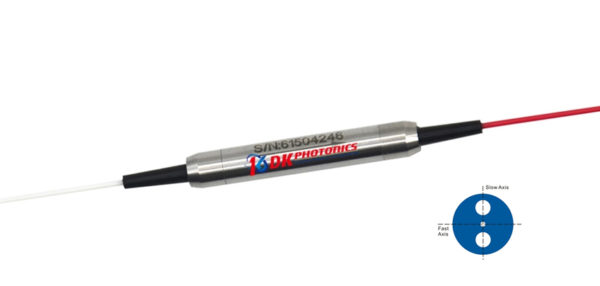Introduction
In the world of fiber optics, ensuring signal integrity is of paramount importance. Polarization Maintaining Optical Isolators play a critical role in achieving this goal. These devices are used to control the polarization state of light traveling through an optical fiber, effectively reducing signal degradation and back reflections. In this article, we will explore the significance of choosing the right Polarization Maintaining Optical Isolator for your setup and the factors to consider when selecting one.
What is a Polarization Maintaining Optical Isolator?
A Polarization Maintaining Optical Isolator is an essential component in modern fiber optic systems. It allows light to propagate in only one direction while blocking light traveling in the opposite direction. The primary function of an isolator is to ensure the transmission of light with minimal loss and maximum polarization extinction ratio. This helps maintain the stability and reliability of the optical signal.
The Importance of Choosing the Right Optical Isolator for Your Setup
Selecting the appropriate Polarization Maintaining Optical Isolator is crucial for the efficient operation of your optical setup. A well-chosen isolator will not only optimize signal quality but also protect sensitive components from potentially damaging back reflections. To achieve the desired performance, it is essential to consider various factors during the selection process.
Factors to Consider When Selecting an Optical Isolator
1. Wavelength Range
Ensure that the isolator’s operating wavelength range matches your system’s wavelengths. Mismatched wavelengths can lead to signal loss and degrade overall system performance.
2. Isolation and Insertion Loss
Higher isolation and lower insertion loss are desirable features in an optical isolator. Look for specifications that guarantee the required isolation level while minimizing signal attenuation.
3. Polarization Extinction Ratio
The polarization extinction ratio indicates how effectively the isolator transmits the desired polarization while blocking the orthogonal polarization. A high extinction ratio is essential for maintaining signal fidelity.
4. Power Handling Capacity
Consider the power handling capacity of the isolator, especially if your setup deals with high-power optical signals. Choosing an isolator with an adequate power rating ensures reliable performance.
5. Temperature Stability
Opt for an isolator with good temperature stability, especially if your system operates in extreme temperature conditions. This ensures consistent performance over a wide temperature range.
6. Compactness and Ease of Integration
For space-constrained setups, compact isolators with easy integration features are preferred. Such isolators simplify installation and system design.
7. Cost Considerations
While performance is essential, it is also vital to find an isolator that fits within your budget. Balance performance with cost considerations to make the best choice for your setup.
Types of Polarization Maintaining Optical Isolators
Several types of Polarization Maintaining Optical Isolators are available, each catering to specific requirements. Let’s explore some common types:
1. Fiber-Coupled Isolators
Fiber-coupled isolators are designed for seamless integration into fiber optic systems. They offer excellent performance and are suitable for various applications, including fiber communication and laser systems.
2. Free-Space Isolators
Free-space isolators are non-fiber-based isolators suitable for systems with free-space optical paths. They provide versatility and are ideal for applications with specialized optical setups.
3. Waveguide Isolators
Waveguide isolators are compact and can be directly integrated into waveguide circuits. They offer low insertion loss and are widely used in integrated optical systems.
Applications of Polarization Maintaining Optical Isolators
Polarization Maintaining Optical Isolators find application in a range of industries and technologies:
1. Fiber Optic Communication Systems
In fiber optic communication, these isolators help enhance signal quality, minimize signal degradation, and protect optical sources from feedback.
2. Fiber Laser Systems
In fiber laser setups, optical isolators prevent reflections from affecting laser diodes and maintain stable laser output.
3. Fiber Sensing Applications
Polarization Maintaining Optical Isolators are crucial in fiber sensing applications to ensure accurate and reliable signal transmission.
Conclusion
Choosing the right Polarization Maintaining Optical Isolator is crucial for ensuring signal integrity, system stability, and reliable operation of your optical setup. Consider the wavelength range, isolation, insertion loss, polarization extinction ratio, power handling capacity, temperature stability, compactness, and cost when selecting an isolator. By making an informed choice and following proper installation and maintenance practices, you can optimize the performance and longevity of your optical system.

